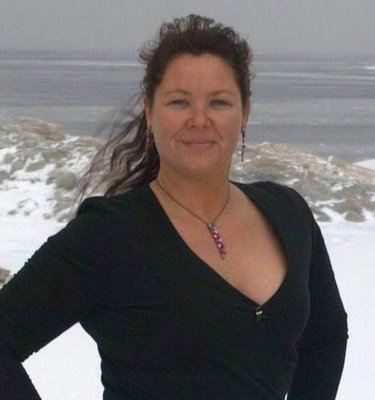Aug 7 - 13th
This week I am bringing you a very special “Educational” Blog page.
For all my techo and engineering mates out there I am sure you will love this edition.
It is jam packed with all sorts of exciting technical info.
For the rest of you: - well: - apologies I guess. Better luck next week maybe. :O}
This was the week we finally caught a break in the weather.
I mentioned a few weeks ago that one of the panels on our Radome developed a rip down the full length of one side.
This had the potential for all sorts of disaster to befall us.
The dreaded “FIRE & ICE” (F@#$ It’s a Real Emergency – I Can’t E-mail!) syndrome may have even eventuated.
This had to be avoided at all costs.
OK, firstly here are some facts and figures about the Radome.
What is it? I hear some of you asking.
That is a very good question.
A Radome is a purpose built housing that protects equipment such as Radar, Antennas, Telecommunications Systems, things of that nature.
In this instance the Casey Radome houses and protects our Satellite, which is our primary means of communication to the outside world.
Therefore it is a very important piece of equipment.
I am a little fond of statistics at the moment – having just completed the national census. ;o]
So here are some Stats on our Casey Radome.
Manufacturer: ESSCO – An Irish Company located in Co. Clare, Ireland.
Installed at Casey: Summer of 1987/1988
Colour: Salem blue. (Very important information this is!!!)
Nominal diameter: 40 feet (12.192 metres)
Panel membrane material: ESSCOLAM 8
Which is a proprietary reinforced plastic membrane laminate (ESSCO is a trademark of Electronic Space Systems Corporation (ESSCO))
Panel membrane surface: Tedlar
Tedlar® PVF film is a tough, durable, preformed polyvinyl fluoride film. It is used in the construction of the panels which make up the Radome.
The unique weathering, mechanical, electrical, chemical, and stain-resistant properties of Tedlar® make it an ideal protective surfacing material for our purposes. It holds up very well in the harsh and unforgiving Antarctic weather. It is a product widely used in the Aerospace environment also.
Operational wind load: 200 mph (321.86 kph)
Number of panels: 215
Transmission loss at C-Band frequencies: Nominally 0.7 dB.
So: - On to the repair of the Radome.
It was a big job, logistically, to perform this repair. The panel needing replacement was quite a way above the equatorial line and was difficult to reach.
Andrew and I discussed many techniques of performing this repair, including rigging up in harnesses and working from ropes suspended from both the inner main walls and also from the outside top most point.
We discarded this idea as being too difficult to work with harness and ropes in the way we needed to.
We decided in the end to build a purpose made scaffolding system. Because the dome is a sphere and a scaffold goes straight up, we were left with a large gap between the errected scaffold and the wall of the dome. The gap was way too large to reach across, so a special extension decking was built out from the scaffold.
We had one person working inside and two people in a metal cage suspended from a crane on the outside of the Dome. There were another two people on the ground as achors to ensure the heavy metal cage was not able to swing into any panels on the dome.
We also had our trusty crane driver moving the cage into the correct location as it was required.
Firstly the damaged panel was unbolted from the inside while on the outside the cap coverings and bolts were removed.
This panel was then lowered to the ground.
Then: one by one we all climbed up to have our piccie taken looking out from the “hole” in the dome. Once the frivolity was over with, the new panel was raised into position from the ground by Chris and I in the crane.
We maneuvered it into place and on the inside Andrew re-inserted the bolts up while Chris and I replaced the outside bolts, installed new end caps and finished the job off with silicon sealant.
The whole job (scaffolding not included) had taken a full day and by the end we were all pretty well chilled and weary.
Working outside in -18 degrees is very tiring and hard on the body. Not a breath of wind made it bearable however, so we were pleased with that.
I slept like the dead that night I have to admit.
So there you go. The repair of a Radome panel in one easy lesson.
I have to say, the weather that day, though very cold, was absolutely glorious! There were beautiful colours and an amazing sky all day.
Then at the end of it all; we were treated to a sunset that had to be seen to be appreciated.
All in all it was a pretty fabulous day all round. The job satisfaction levels were way up there.
Again, one more new and interesting work aspect in my adventure down here.
It is a pretty amazing year indeed.
OK then, enough techo stuff for one week.
We have had a BIG week here. We had to shut down the red shed for two days to eradicate a fly infestation.
We also had real fire on station which had to be fought (I was fire chief that day – doh!).
No one was hurt fortunately, but quite a bit of damage was done.
I will tell you about that next week.
Have a good one till then.
Toodles Doodles!
Trace :o]


0 Comments:
Post a Comment
<< Home